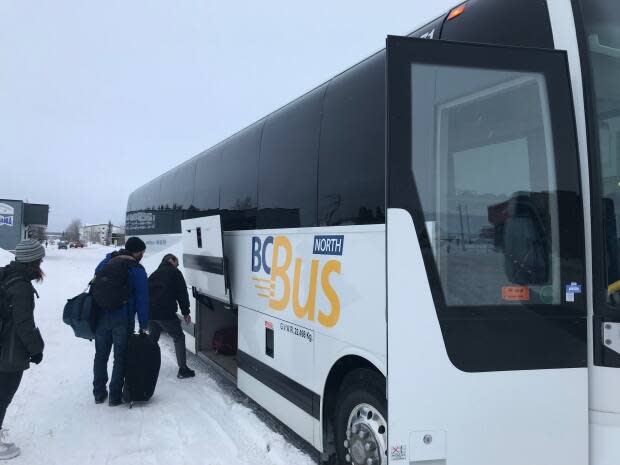Saga of Vancouver Island rail corridor highlights B.C.'s difficulty in creating regional transit

In 2011, right after passenger service was shut down on Vancouver Island's Esquimalt & Nanaimo Railway, the province estimated $15 million would be needed to restore the line that connects nearly all of the Island's major population centres across hundreds of kilometres.
Twelve years later, the price tag is as much as $700 million, and the government is now spending $18 million on consultation to simply figure out if restoring the route is viable.
"This is not the end of the line for the corridor," said Premier David Eby, explaining why this round of consultations on the future of the Island Rail Corridor, as it's now known, would be different.
"This is just the beginning of the work in a different way, in the way that all of our projects and land use decisions need to work in this province in partnership with First Nations."
While evolving government views around First Nations land claims have been part of the story of the Island Rail Corridor, across the province there are questions over regional transportation upgrades being so slow.
"They're politically fraught decisions and it feels like, from a provincial level, sometimes the most attractive strategy is just to keep studying the issue," said former West Vancouver Coun. Craig Cameron, who sat on the TransLink Mayors' Council.
"Keep the impression in people's minds that you're doing something, without actually having to make any hard decisions."

By bus...
Cameron's frustration stems in part from an inability to get regional transit connecting Squamish and Whistler to Metro Vancouver, despite years of lobbying by local officials and a study completed in 2017.
"Here we are in 2023 and we're no closer to having that transit service," he said, blaming the provincial government and B.C. Transit for not creating new funding mechanisms or an increase to the gas tax.
"Different things have been discussed behind closed doors, and it seems that every single time the province comes back and says, 'well, sorry, we're not going to give you any other tools.' It's sort of like the Peanuts sketch when they pull the football away."
Much of the discussion around regional transportation in recent years has centred around the 2018 closure of Greyhound bus lines that connected much of the province.
In the years since, the province has funded a separate service for northern B.C. that serves some but not all of the previous stops. The southern part of the province has a patchwork of different lines that have mostly replaced Greyhound service — some of which are private, some of which have been created by B.C. Transit, and some that are currently suspended due to business problems.
When Eby was asked why transit options connecting different regions were worse than they were in 2017, he bristled.
"That's simply not right," he said, before listing enhanced transit services in the Fraser Valley and supports given to maintain service during the pandemic.
"We know that expanding transit takes pressure off of roads in terms of congestion ... and supports our clean economy. That's why we put these kinds of investments forward and we'll have more to say about that, actually, in the days ahead."
...or by train?
But is there a way forward for enhanced passenger train service in B.C. in light of Tuesday's announcement?
Brendan Dawe, a planning consultant who has studied defunct rail lines across the province, is skeptical.
"The east side of the island was actually the strongest rail corridor in the province ... there's a chain of townsites that are nicely spaced out, that you could envision this as being developed around rail transportation," he said.
"And so, if the Island Corridor doesn't work there, then there's really very little [possibility] in the rest of the province, where everything would have to be built new and there isn't a legacy infrastructure."
Still, he acknowledges that people — including the province after Tuesday's announcement — will continue to keep the option open.
"It certainly captures a certain nostalgia, but it also captures an idea of making a collective good happen, of not being dependent on your car to get around and do things, and I think that's attractive to a lot of people," he said.
"I'm sad to see this this continue to be kicked down the road ... But it's very understandable, given the failure of senior governments to do much with this in the last 10 to 40 years."

